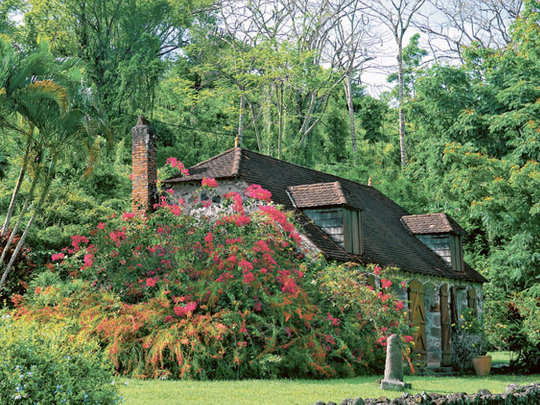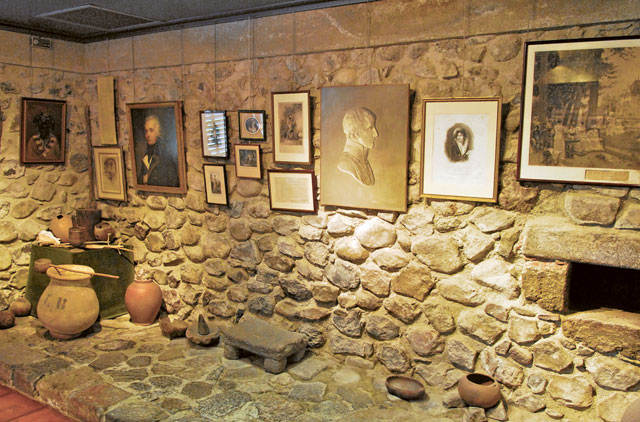
Even now, Paris feels a world away from Martinique. How much farther the immense capital must have seemed to Marie-Josephe-Rose Tascher de la Pagerie, a teenager on a remote sugar plantation with an improbable future. "You will be queen," a fortune-teller told her, according to the local legend.
Indeed, she would leave this southeast Caribbean island and rise through French society through the last days of its monarchy, the French Revolution and Reign of Terror to marry Napoleon Bonaparte, who would crown her Empress Josephine.
If she returned to Martinique today, she would find a sophisticated French-influenced culture enhanced by the flavours and rhythms of the non-Europeans who have lived here for centuries. They make up most of the population of this chic yet laid-back island, which dips into the Atlantic Ocean on one side and the Caribbean Sea on the other.
Josephine's humble beginnings on Martinique are explored here in a museum, the Domaine de la Pagerie, just outside the resort village of Les Trois-Ilets, named for three little islands just offshore.
When Josephine lived here in the mid-18th century, Martinique was a French colony. Her family owned more than 200 slaves on their plantation south of the capital, now called Fort-de-France, and the songs sung by these slaves and their descendants in Martinique's sugarcane fields are now performed by professional musicians and dancers wearing bright Madras plaids in luxury hotels.
Just the foundation of their "great house" remains, a modest stone square set in a green field of grass under the gaze of a white stone bust of Josephine.
The original house, set atop a hill with a view of its fields in the valley below, was blown down in a hurricane when Josephine was a toddler. Financial problems kept her parents from rebuilding, so the family moved into the upper quarters of the property's sugar factory. The foundation that remains supported a wooden house built after Josephine left for France in 1779.
The stone factory walls remain standing in the shade of leafy palms.
The kitchen, also a separate building, has been restored as a museum containing Josephine's tiny, canopied bed, portraits, porcelain gifts bearing the faces of Josephine and Napoleon when they were the toast of Europe, and a copy of her letter of marriage to Napoleon, along with other historical documents. There are also rusted chains that once shackled slaves, resting at the bottom of a glass case.
The legacy of slavery still tarnishes Josephine's reputation in Martinique. Many still blame her for Napoleon's re-institution of slavery when France regained control of its colonies from the British, even though it's unclear whether Josephine influenced that decision. It certainly would have benefited her family — members of the island's wealthy elite who have considerable land holdings to this day.
Perhaps this is why Josephine's face and name are absent from most of the island's narrow streets, colourful buildings and even the Pagerie's gift shop, which mostly features postcards of island scenes. Instead, the most prominent faces in Fort-de-France are two late intellectuals, Aime Cesaire and Edouard Glissant, whose writings explore black identity in a French-speaking country.
Banners celebrating their works hang in the sleek, modern airport named for Cesaire in 2009. Cesaire's book-filled office has been preserved in the capital's main theatre, a landmark building that also bears his name.
Martinique is a department of France. French is the official language and the euro is the official currency. Locals drive Renaults and Citroens on twisty mountain roads and shop for the latest European fashions in boutiques.
But its cuisine — French staples spiced with curry, fresh seafood, tropical fruits — is flavoured by what's grown locally, along with the mix of African and Indian dishes brought to the island over the centuries. The covered market in the heart of Fort-de-France has packs of spices and vials of vanilla for sale and Madras plaid tablecloths for those who want to try the cuisine at home.
Even as empress, Josephine had a longing for her Caribbean home. She even tried recreating Martinique's tropical splendour at her home near Paris, Malmaison, a refuge famous for its gardens and greenhouse.
Visitors to Martinique can experience a similar retreat at the Jardin de Balata, a botanical garden perched in the hills above Fort-de-France. A paved walkway winds its way through bromeliads, orchids, palms, flowering trees and a cluster of the balisier flower, the flower of Martinique, a red blossom that looks like a bird of paradise. A rope suspension bridge offers a more daring view of the lush tropical foliage.
Farther north along Martinique's Caribbean side are the black sand beaches around the small town of Saint-Pierre, built around the ruins left by a volcano that smoked through Josephine's lifetime and finally erupted in 1902.




